
A year ago today, the world said farewell to Queen Elizabeth II, who had reigned on the British throne for a remarkable 70 years. Today, in her memory, we’re taking a look at one of her most sparkling legacies: twelve of the tiaras that she wore while working as Britain’s most senior diplomat.

We’ll begin with the first tiara that Elizabeth was pictured wearing in public. On her wedding day in November 1947, Princess Elizabeth borrowed a diamond fringe tiara from her mother to wear with her bridal veil. The tiara had been commissioned by her grandmother, Queen Mary, and it was set with the very same diamonds that Mary had worn on her own wedding day in 1893. Elizabeth inherited the tiara from her mother in 2002 and wore it and handful of times afterward. She also loaned it to her granddaughter, Princess Beatrice, for her wedding in 2020. (Beatrice was the fourth family bride to wear the diamonds—Princess Anne borrowed it from the Queen Mum for her first wedding, too.)
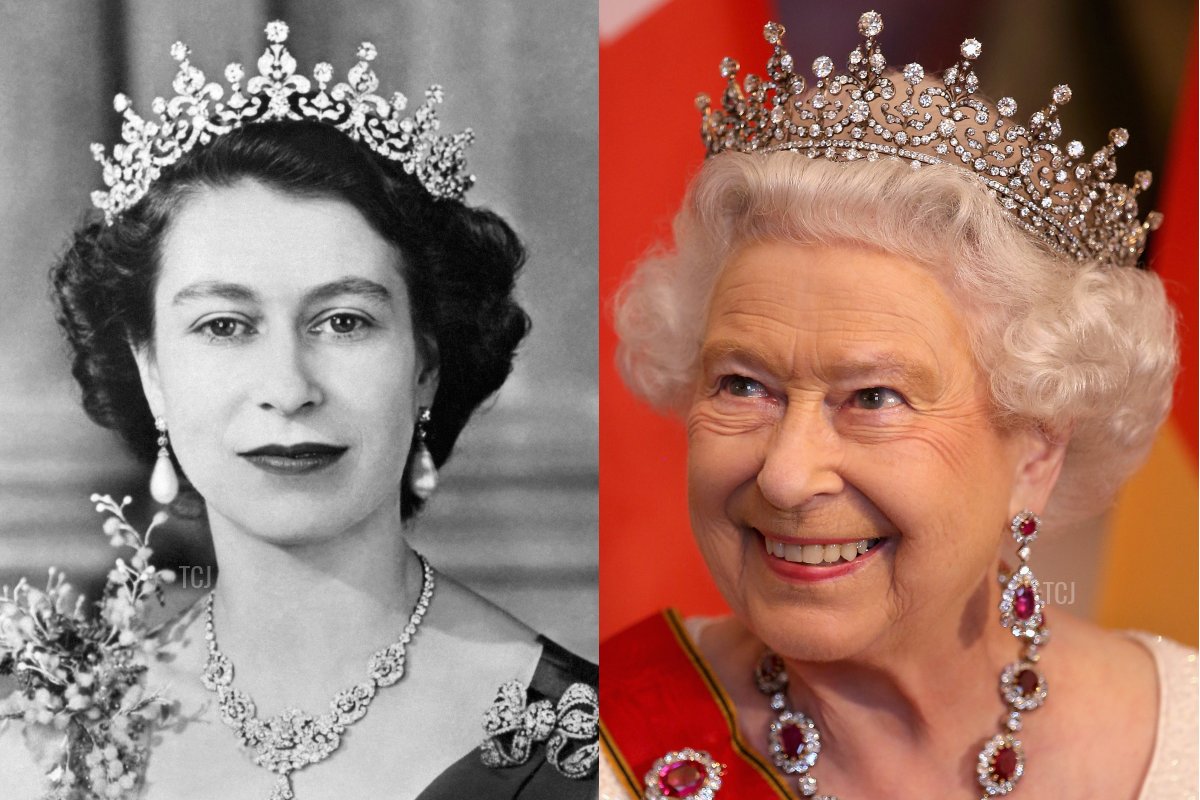
Queen Mary offered Princess Elizabeth a whole lot of glittering wedding gifts to celebrate her 1947 nuptials. The haul included the classic Girls of Great Britain & Ireland Tiara, which had been one of Mary’s own wedding gifts in 1893. By 1947, the top and base of the tiara had been separated, but Mary gave both pieces to Elizabeth, who eventually reunited them. Elizabeth wore the tiara frequently from the start, and it easily became the most iconic piece of jewelry that she wore throughout her seven-decade reign.

There was another tiara in Princess Elizabeth’s wedding gift collection, too. The Nizam of Hyderabad offered her the chance to pick a suite of jewelry from Cartier as his wedding present. She selected a floral demi-parure, consisting of a large tiara (with removable brooch elements) and a matching necklace. She wore the tiara often, but eventually put it aside after a tour of Canada in the 1950s, reportedly because it was tough to keep it secure on her head. After a state dinner in Ottawa, one newspaper article revealed, Elizabeth noted that she thought the tiara “was going to fall in the soup.” Eventually, she had the piece dismantled, preserving only the individual rose brooches.
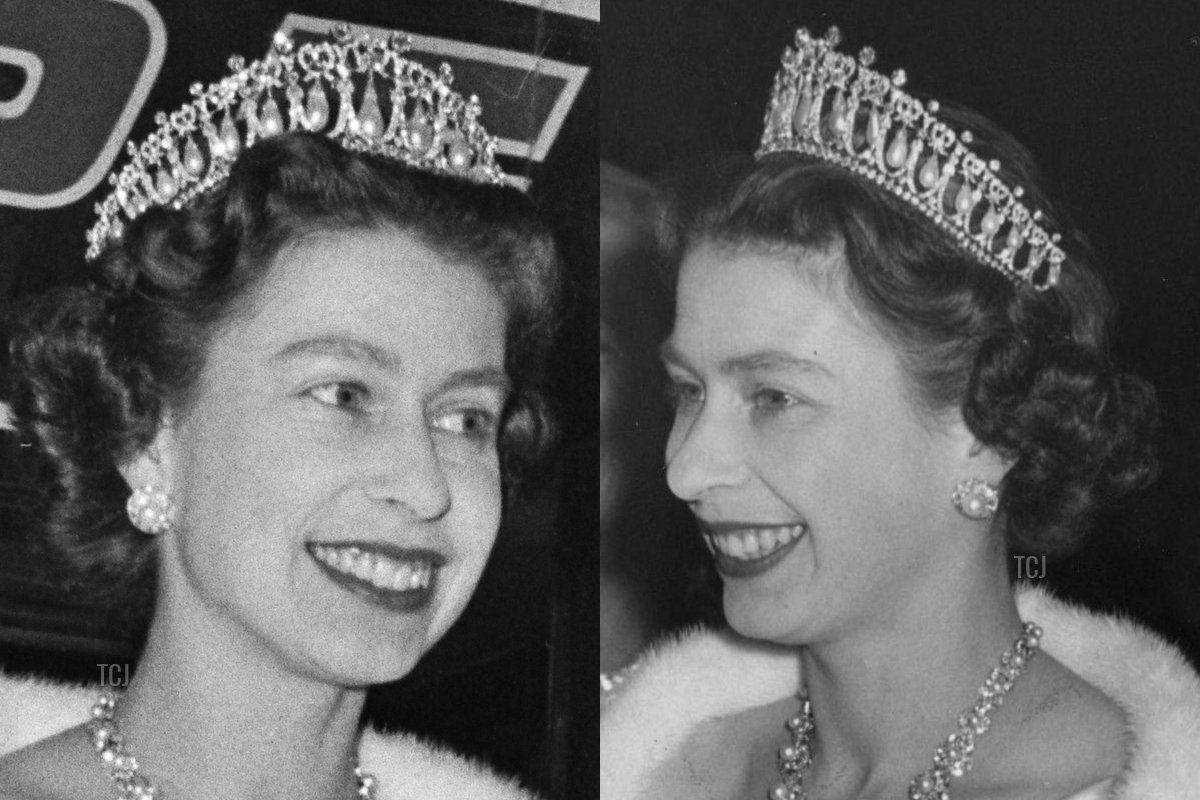
By the time Elizabeth had the Nizam dismantled, her tiara collection had grown exponentially. She ascended to the throne on her father’s death in 1952, and a year later, her grandmother, Queen Mary, passed away as well. Mary left Elizabeth virtually all of her jewelry, including several important tiaras. One of Mary’s favorites was a diamond and pearl tiara with a lover’s knot motif, made as a copy of one owned by the family of her aunt, the Grand Duchess of Mecklenburg-Strelitz. Elizabeth wore the tiara occasionally, but she eventually loaned it to her daughter-in-law, Diana, and later to her grandson’s wife, Catherine.
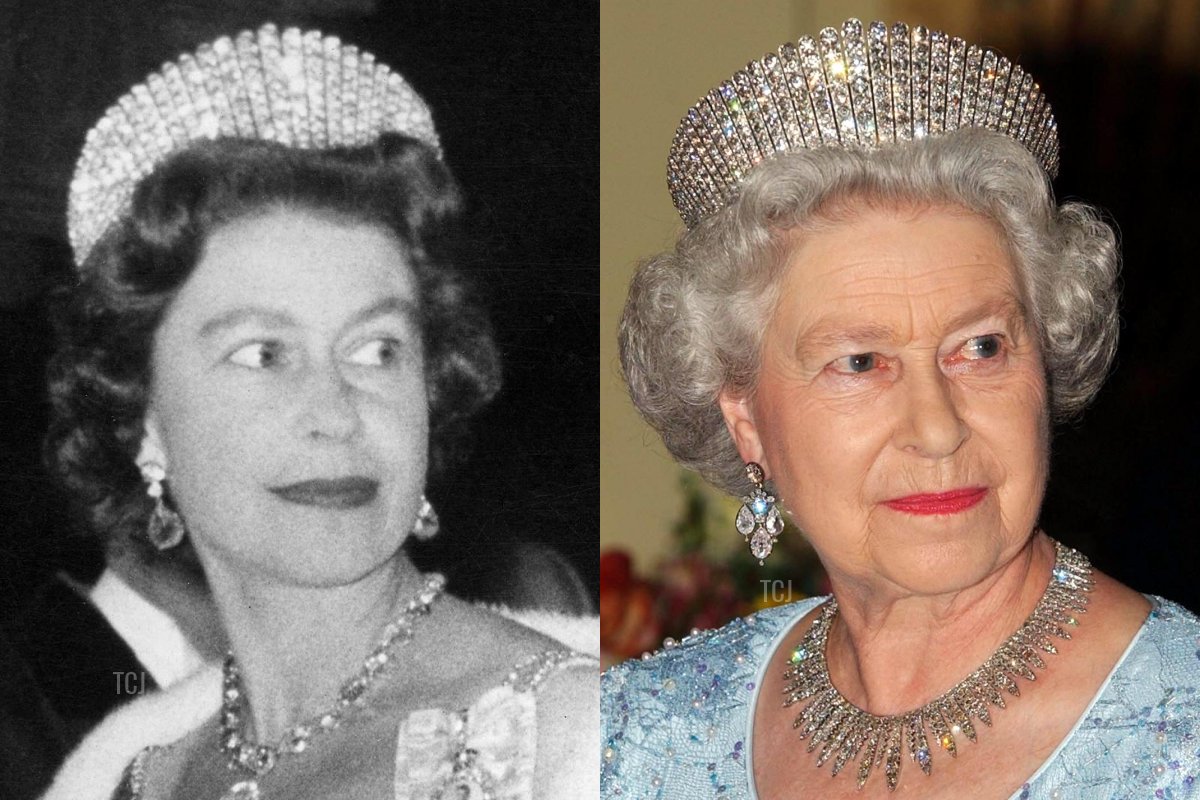
More suited to Elizabeth’s tastes was the grand diamond kokoshnik that Mary had inherited from her mother-in-law, Queen Alexandra, in 1925. The imposing tiara, designed to mimic those worn by Alexandra’s Romanov sister, was made in 1888. Elizabeth wore the kokoshnik for the first time publicly during her Commonwealth tour in 1954, and she continued to wear it regularly for the rest of her long reign.
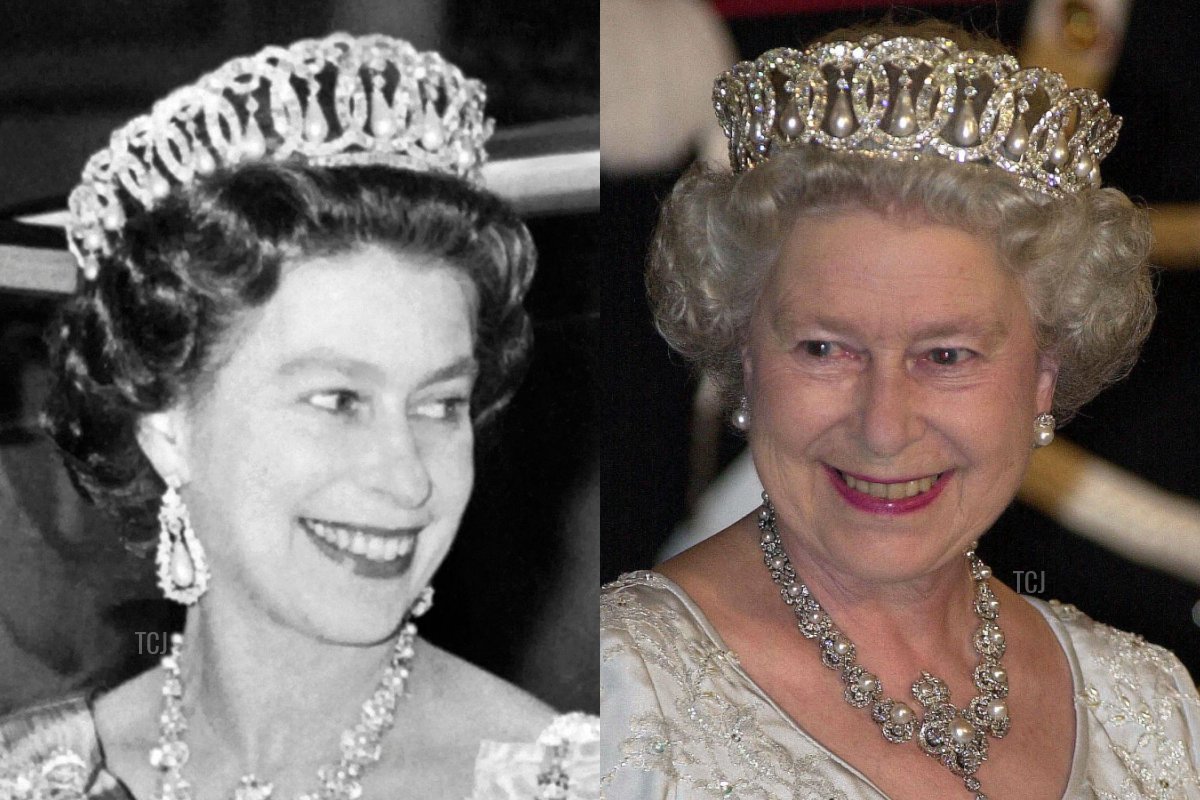
Mary’s 1953 tiara bequest also included the magnificent Vladimir Tiara, which she had purchased from the Romanovs after the revolution. The grand tiara featured a design of interlocking circles from which pearl drops were suspended. Elizabeth fell in love with the tiara, and it became one of her most-worn jewels.
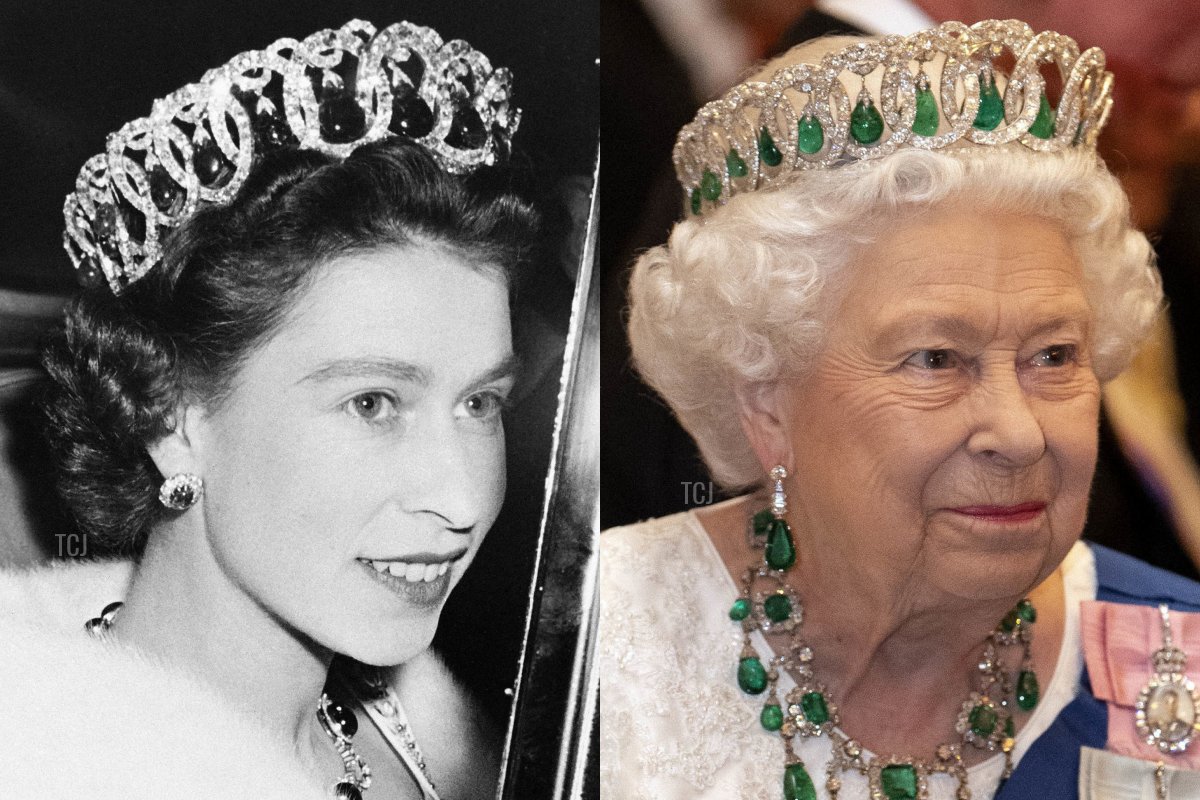
Part of the Vladimir Tiara’s appeal was its versatility. After purchasing the jewel, Queen Mary had it adapted so that it could also be worn with the gorgeous emerald drops that she had acquired from her mother’s family collection. Elizabeth loved to swap out the pearls in the Vladimir for the Cambridge Emeralds for gala occasions, often pairing the emerald setting of the tiara with pieces from the Delhi Durbar Parure and from the Greville Bequest.

Later in her reign, Elizabeth experimented even further with the tiara, wearing it in its “widowed” setting—without any drops at all. This third, all-diamond version of the tiara made it a versatile jewel for pairing with other diamond pieces from Elizabeth’s collection.
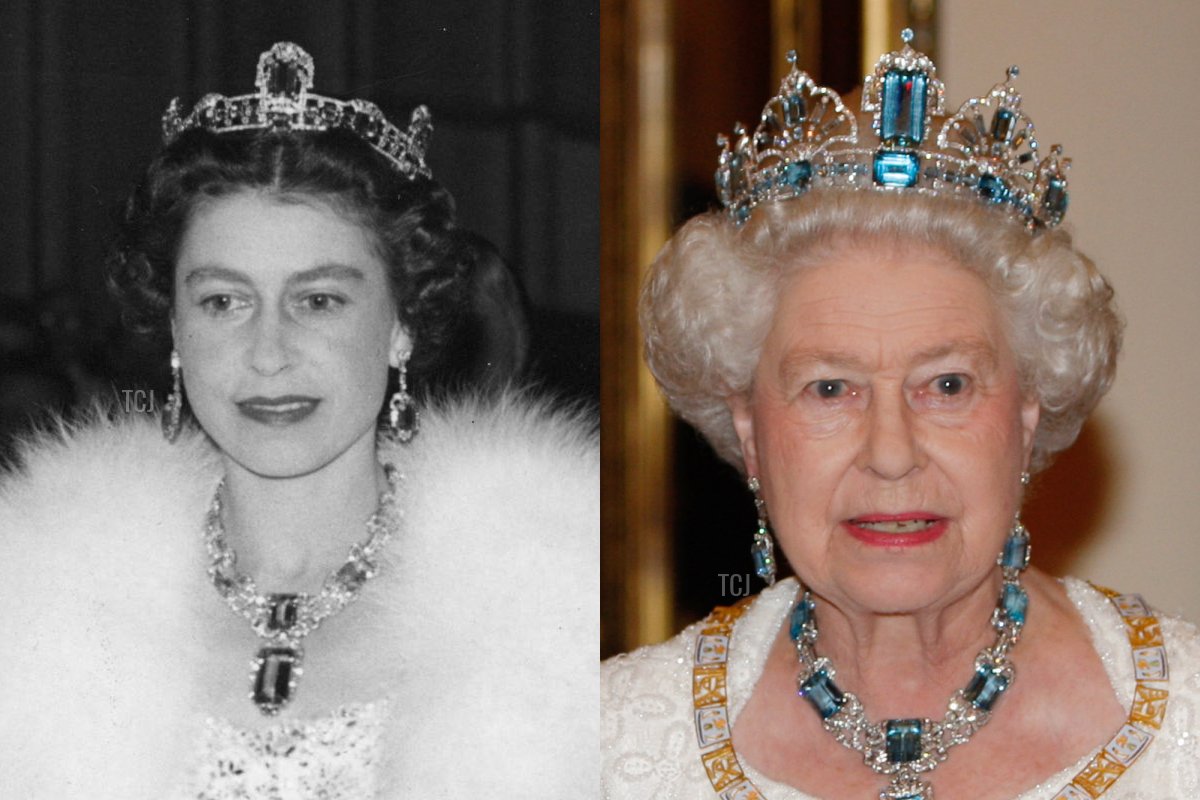
In her coronation year, the people of Brazil also supplemented Elizabeth’s jewelry collection, offering her a gorgeous suite of diamond and aquamarine jewels. In 1957, she commissioned Garrard to make her a tiara to coordinate with the jewels. They constructed a low-profile bandeau, but in the 1970s, Elizabeth decided to have the small tiara super-sized, creating the imposing diamond and aquamarine diadem that remains in the collection today.
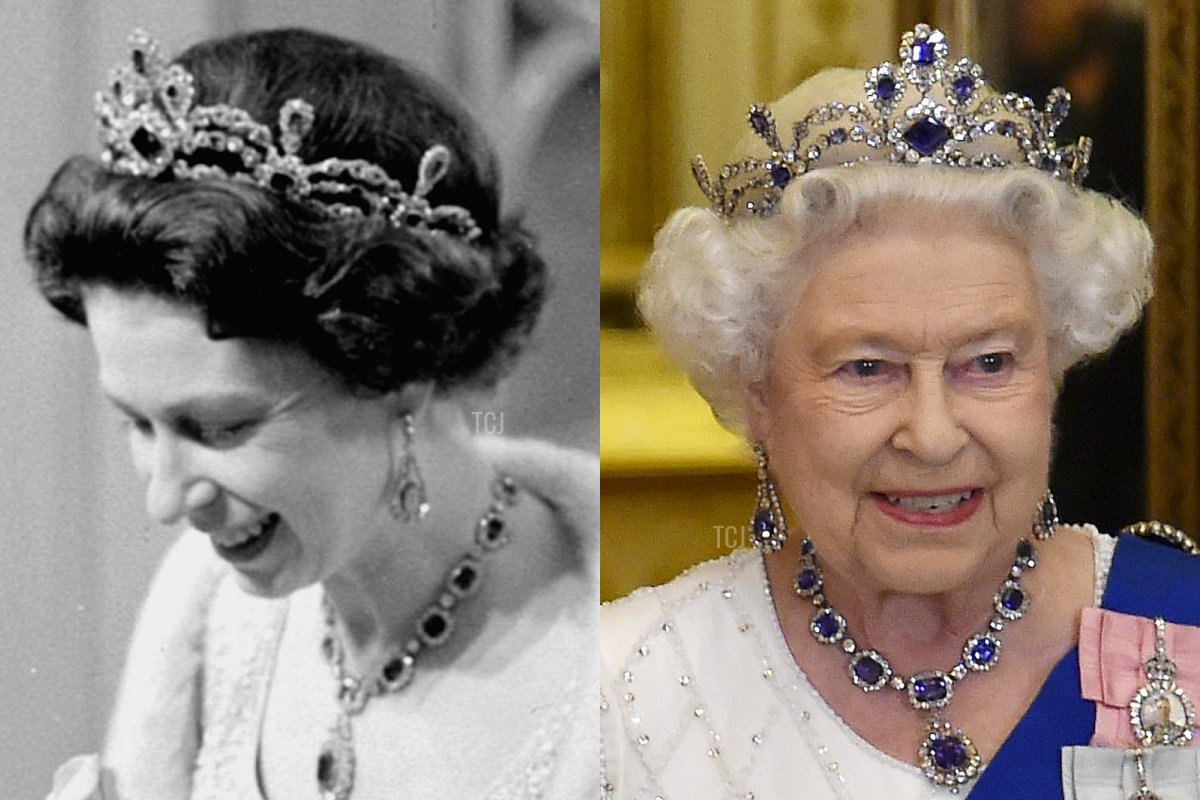
While most of her tiaras were received as gifts or inherited, Elizabeth also purchased at least one tiara during her reign. This diamond and sapphire tiara, which was originally a necklace from the collection of a Belgian princess, was acquired by Elizabeth in the early 1960s. It was chosen to coordinate with the set of Victorian-era sapphire jewels that Elizabeth had been given by her father, King George VI, as a wedding present in 1947. The combination of the tiara and jewels remained a favorite of Elizabeth’s for the next six decades.
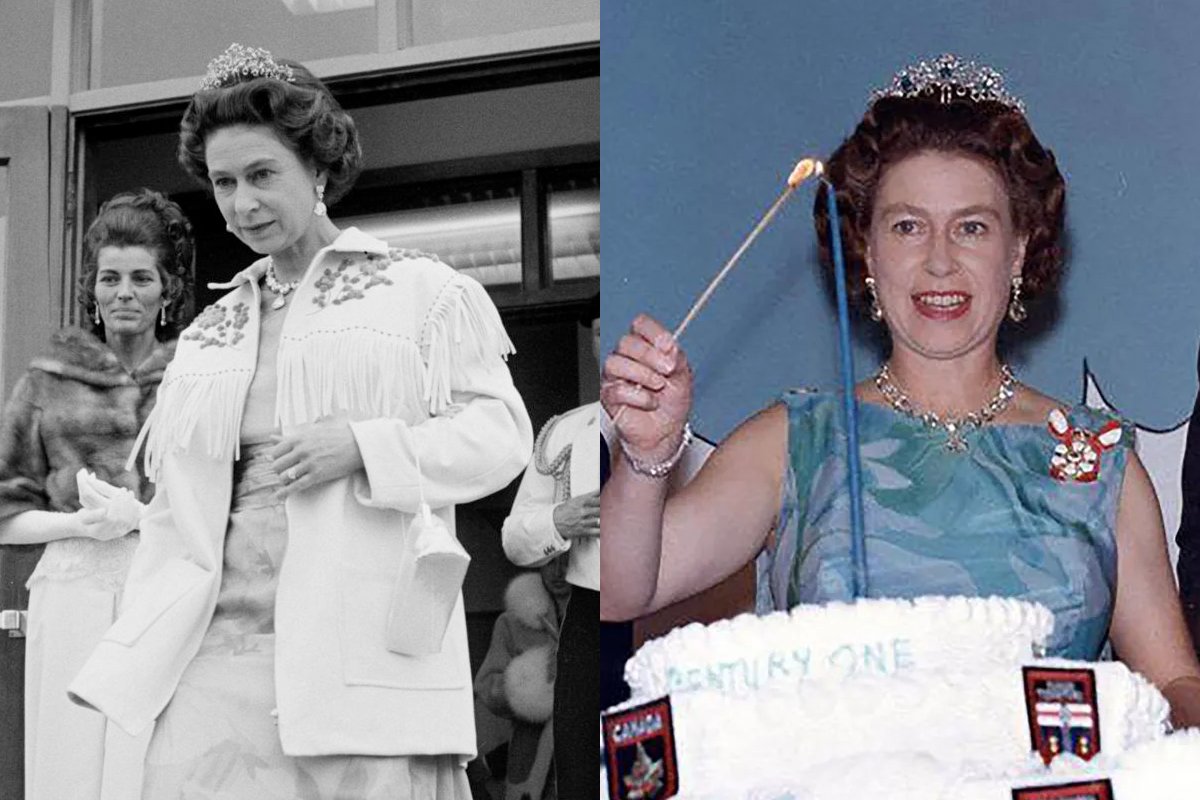
We don’t truly know how many tiaras Elizabeth owned, and occasionally, she wore a tiara for just one public outing. That was the case with the Aquamarine Ribbon Tiara, a diamond and aquamarine tiara. She wore it just once, during a tour of Canada in the summer of 1970. Later, she loaned the tiara to her daughter-in-law, Sophie, who has worn it often.

Another one-off tiara moment happened in January 1973, when Elizabeth arrived for the Fanfare for Europe Gala at Covent Garden wearing an unfamiliar tiara. The jewel was the Plunket Tiara, which she had borrowed for the evening from a close friend, Patrick Plunket. The story goes that the frame of her tiara had unexpectedly broken on the way to the event, and Lord Plunket had offered to loan her his family tiara instead. This was apparently the only time that Elizabeth was ever photographed in a tiara that didn’t belong to the royal family.

By the 1970s, Elizabeth’s collection of jewelry set with rubies was growing steadily—and yet, she lacked a tiara set with the gemstones. She remedied the problem by commissioning Garrard in 1973 to make a new, modern ruby tiara for her collection. They used the diamonds from the dismantled Nizam of Hyderabad Tiara, plus a collection of rubies offered to her by the people of Burma as a wedding present in 1947. The resulting jewel, the Burmese Ruby Tiara, featured stylized heraldic roses in its design. Elizabeth wore it regularly for the next four decades.

Eventually, another ruby tiara was added to Elizabeth’s collection. Queen Victoria’s Indian Circlet, designed for her in the 1850s by Prince Albert, is an heirloom of the crown, which meant that Elizabeth technically inherited its use in 1952. But it was a favorite of the Queen Mother, and Elizabeth decided to let her continue to keep it in her own collection. When she passed away in 2002, Elizabeth finally received the tiara (and the lion’s share of the rest of the Queen Mum’s jewelry). She wore it in public precisely once, for a state dinner in Malta in 2005—making it the very last tiara that she “debuted” during her 70-year reign.
Leave a Reply
You must be logged in to post a comment.